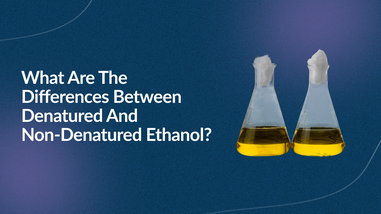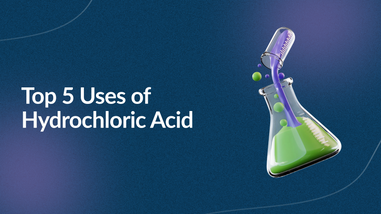- No products in the cart.
Continuous glucose monitoring (CGM) devices provide a way to improve the quality of life for diabetes patients. As their name suggests, these devices continuously monitor blood glucose levels. This reduces the need for recurring blood tests and finger pricks. The ability to continuously monitor blood glucose without the need for drawing blood can be liberating, and will be the future of diabetes management.
That said, there are technical challenges when manufacturing these CGM devices, including managing glucose oxidase temperature stability. The enzyme most commonly used in these sensors, glucose oxidase (GOx), has proven difficult to stabilize once in the body (in vivo). The ideal lifetime of a CGM device is months before needing replacement. However, reduced glucose oxidase temperature stability and molecular degradation in vivo has only allowed a lifetime on a scale of only days to weeks with current technologies. This is because the in vivo environment is warm, moist, and molecularly complex. Such an intricate environment contains many variables that decrease enzyme stability.
Furthermore, current enzyme immobilization techniques often rely on covalent crosslinking (e.g. GAX) that can permanently alter the conformation and activity of biomolecules. Researchers are working to develop innovative new ways to increase glucose oxidase temperature stability, maintain bioactivity, and reduce degradation.
Sol-Gels can Encapsulate Biomolecules
One new promising approach is the encapsulation of glucose oxidase in silica sol-gels. Sol-gels create a hybrid mixture of organic and inorganic molecules that can form materials that range from brittle glass-like to flexible gel-like properties. Other biological molecules such as antibodies, enzymes, and other proteins have been encapsulated in sol-gels to improve their stability in biosensors and bioreactors.
Many sol-gel encapsulated biomolecules have been studied using the silica precursors TMOS (tetramethyl orthosilicate) and TEOS (tetraethyl orthosilicate). However, due to related conformational changes to the enzyme, TMOS and TEOS haven’t proven very useful in practical applications. This technology can be optimized for long-term encapsulation of an active biomolecule, such as glucose oxidase, by modifying these precursors and including other additives.
Reducing Pore Size Decreases Leaching
Since these sol-gels often exist as a thin film, care must be taken to promote uniformity. Uniformity in pore size reduces the risk of fractures that result due to non-uniform hydrostatic forces as the film dries. These fractures increase the risk of enzyme leaching from the silica matrix.
Ormosils (organically modified silica/silicate) such as propyltrimethoxysilane or methyltriethoxysilane can reduce these fractures by allowing for control of the ratio between hydrophilic and hydrophobic monomers, thus controlling the wetting of the sol-gel layer. Unlike TMOS and TEOS, ormosils also preserve the native structure of biomolecules and add to their stability.
Additionally, polymers can also be added to promote uniform pore size. Polyethers and polyethylene glycol (PEG) have been found to control pore size distribution and improve hydration during aging, respectively.
Other promising additives to sol-gels include osmolytes such as sorbitol and N-methylglycine. Since enzymes typically exist in an aqueous environment, these osmolytes can help glucose oxidase temperature stability and activity when encapsulated in a silica matrix. Furthermore, osmolytes help promote larger pore sizes, which increases diffusion to the enzyme.

Sol-Gel Production Generates Organic Byproducts
Sol-gels are a promising new way to encapsulate stable, active biomolecules. However, their production also generates organic solvents, such as methanol or ethanol, which can denature biological molecules. There are two key ways around the formation of these organic intermediates: (1) the use of new silane precursors (such as glycerated silanes or sodium silicate) or (2) the use of aqueous processing methods to quickly evaporate out organics (chemical vapor deposition).
The new silane precursors have been found to enhance both stability and function of enzymes by confining enzyme mobility. Furthermore, pH modulation during production also influences GOx activity and stability, with an optimal condensation pH of 12.
New Avenues for Glucose Oxidase Temperature Stability
Although enzymes stored on a shelf or in the lab can be quite stable, once introduced to a warm, moist, and molecularly complex in vivo environment, stability is dramatically reduced. This is a particular concern in the manufacture of implantable CGM devices. However, new promising methods to improve glucose oxidase temperature stability in an in vivo environment are on the horizon.
Whether testing new GOx immobilization methods or manufacturing CGM devices, glucose oxidase temperature stability is a notable concern for your application. By purchasing chemicals and reagents from a knowledgeable supplier, you can stay focused on what really matters – the science.
__
For over 40 years, Lab Pro has been committed to delivering the highest quality chemicals, reagents, and cleaning solutions to medical device and biotechnical laboratories worldwide. Come visit the biggest Lab Supply showroom in California, or contact us online or at 888-452-2776.
Reference:
https://www.ncbi.nlm.nih.gov/pmc/articles/PMC3879770/












































